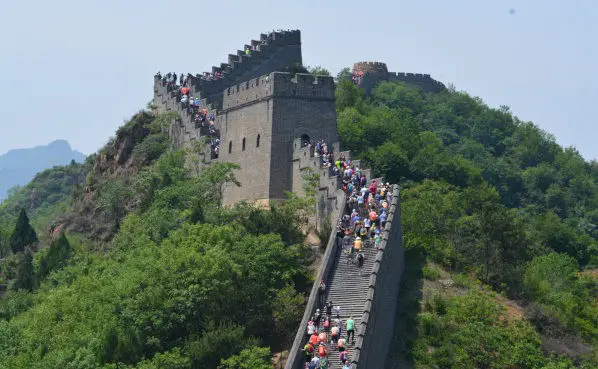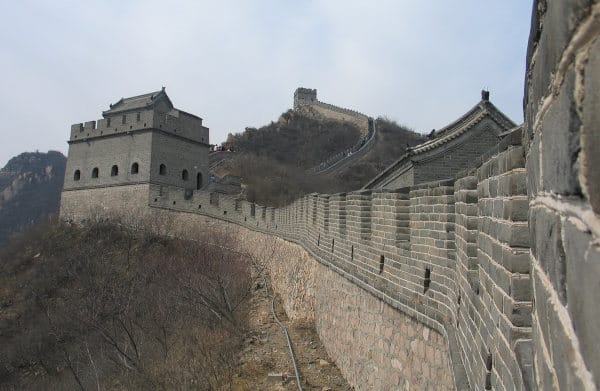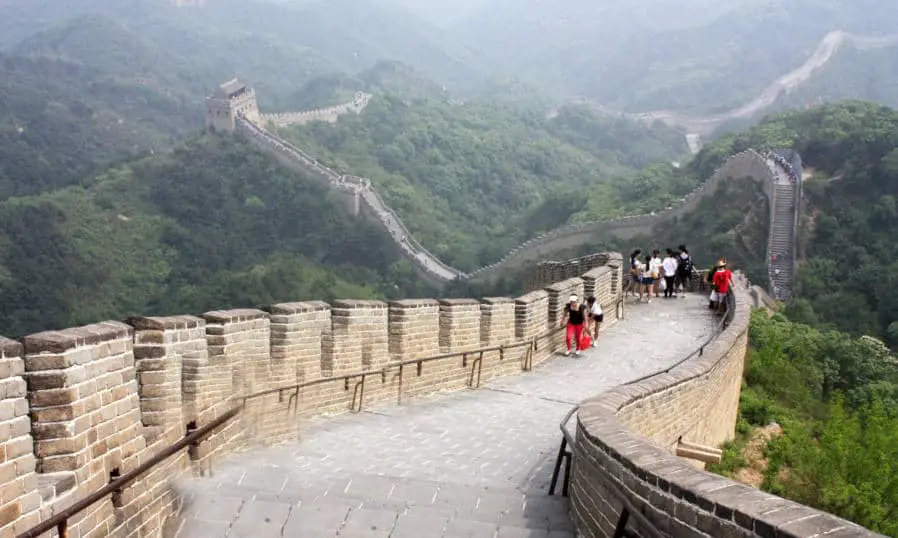It’s a well-known history that the Great Wall was built originally to repel foreign invaders. As China’s historic landmark and one of the most important world cultural heritage sites, the Great Wall stretches more than 5,000 miles along the Northern borders of China.
However, did the Great Wall actually succeeded in defending ancient China from outside invasions and attacks from other armies? In this article, we’ll learn about the answer.
Brief History of the Great Wall
The general consensus among historians and archeological experts is that the construction of the Great Wall began in 5th-century BC and as early as the 7th-century BC. However, the construction wasn’t actually organized back then and so the products are just scattered fortifications here and there.
It was only in 211-206 BC under the famous first emperor, Qin Shi Huang that some of these scattered parts are connected to actually resemble a “wall”, a line of guard posts that are mainly functioned to spread fire signals. The signals are used to call reinforcement troops during attacks and invasions.
As the first emperor of unified China under the banner of the Qin Dynasty, Qin Shi Huang ordered the removal of some of these fortifications and to join the other existing walls into a single wall system. The plan is that this wall system would extend for more than 10,000 li (around 3,300 miles). This is where the name “Wan Li Chang Cheng”, literally meaning “The Wall of 10,000-Li Length” comes from.
Even today, this construction project remains one of the most ambitious ever recorded in human history.
Why Was The Great Wall Built In the First Place?
The original purpose of the Great Wall was to protect unified China from the attacks and invasions of the Xiongnu, a confederation of nomadic people that lived on the eastern Asian Steppe since the 3rd-century BC. Many experts tried to connect the Xiongnu with the Huns, but there’s no scholarly consensus that has been reached until today.
However, the fact remains that the Xiongnu often raided the Chinese northern border, and are highly mobile horseriders. They were a very serious threat in Northern China back then, causing various damages ranging from economical (thievery, arson, etc.) and obviously, a huge number of injuries and casualties.
The main weakness of the Great Wall—as with any other stonewall fortifications—, is obviously when people scale and climb its side. However, with the majority of the Xiongnu people being horseback riders, the Wall is very effective in keeping them at bay. The Xiongnu, due to the presence of the wall, was forced to focus their efforts on a single section of the wall, while the Chinese force can quite comfortably fight from above.
Obviously the Great Wall didn’t have a 100% success rate and there have been stories and historical records about the Xiongnu people breaching the Great Wall. However, without the presence of the Great Wall, the invasion would be much, much worse, and would’ve probably changed Chinese history dramatically.
Related reading: “Top 5 Amazing Natural Places in China“

Great Wall’s Importance To China’s Trading Activities
The Great Wall has very special importance for the trading activities in Ancient China. Merchants and traders back then didn’t really have many transportation options besides horses and carts. So, merchants wouldn’t be able to scale up the wall and must pass the gate along the wall, allowing an easier time for the Chinese government to inspect and regulate goods and impose taxes.
On the other hand, the Great Wall is also important in preventing nefarious activity. Extra security measures (i.e. hiring bodyguards) would increase the cost of the goods, and the Great Wall helped provide extra securities for the businessmen and merchants.
The Great Wall’s function as a protective “device” played a very prominent role in the history of Silk Road, the trade routes that tied together with the ancient East and West. Christianity, for example, has its early growth in China along the Silk Road and the Great Wall. Buddhism, that came from India, grew significantly in China via the trading interactions of India-China dating from the 2nd century CE.
Related reading: “Top 5 Famous Chinese Temples You Must Visit“

The Evolution of The Great Wall
Although we have mentioned that Emperor Qin Shi Huang was the one starting the construction—or rather, the “unification” — of the Great Wall, very little of the actual Wall from Emperor Qin’s time is still here today.
Instead, most of the wall that we can see today is from the time of the Ming Dynasty (1368 to 1644 CE). The Ming Dynasty is widely known as the time where the Chinese culture really flourished with various major inventions in technology, literature, fashion, and so on. (Related reading: Chinese Hanfu, Traditional Chinese Games and Outdoor Activities, Traditional Chinese Board Games.)
China during the time of the Ming Dynasty took a defensive approach, military-wise, and so
various parts of the Great Wall are also reinforced during the time of the Ming Dynasty to protect from outside attacks.
Simatai, the famous section that is often known as the best of the best of the Great Wall, was renovated during the Ming Dynasty. Simatai is famous for its panorama, separated by two valleys into the western and eastern parts.
🧧 Use our free “ChinaGoGuide” app. Your personal guide to your journey to China. Try it now!
The Failure of the Great Wall
The Great Wall declined, function-wise, along with the decline of the Ming Dynasty. The Ming lost power from within, weakened by over two centuries of conflict with the Mongols under both Genghis Khan and his grandson Kublai Khan.
The Manchus took advantage of this weakening Ming Dynasty due to peasants’ revolt in 1644, and literally marched through the Shanghai Pass—one of the major passes in the Great Wall, located in today’s Qinhuangdao, Hebei province—-. This is the most famous failure of the Great Wall.
Some historians argued that the Great Wall was never truly tested as a defensive fortification, and while it was successful in keeping invaders out, it was structurally ineffective against large-scale army invasions.
Conclusion
The Great Wall today is no longer China’s defensive measure, but still remains as one of the most iconic military monuments in the world.
Although function-wise, the Great Wall was imperfect, the wall stands today as the world’s largest available military structure and is still a very important part of the world’s history.
Related reading: “Top 5 Famous Monuments in China“
An Introduction to Chinese History & Culture (Aff.link)
Dive into China’s rich past and intriguing present! From ancient dynasties to modern powerhouses, uncover Chinese culture facts, pivotal moments, and the captivating tales that have shaped this vast nation.
Stay in Touch
 Join our newsletter by using the forms on this website or click here!
Join our newsletter by using the forms on this website or click here! Follow us on Google News
Follow us on Google News Follow us on Facebook
Follow us on Facebook
Featured Image by Pxhere.com






